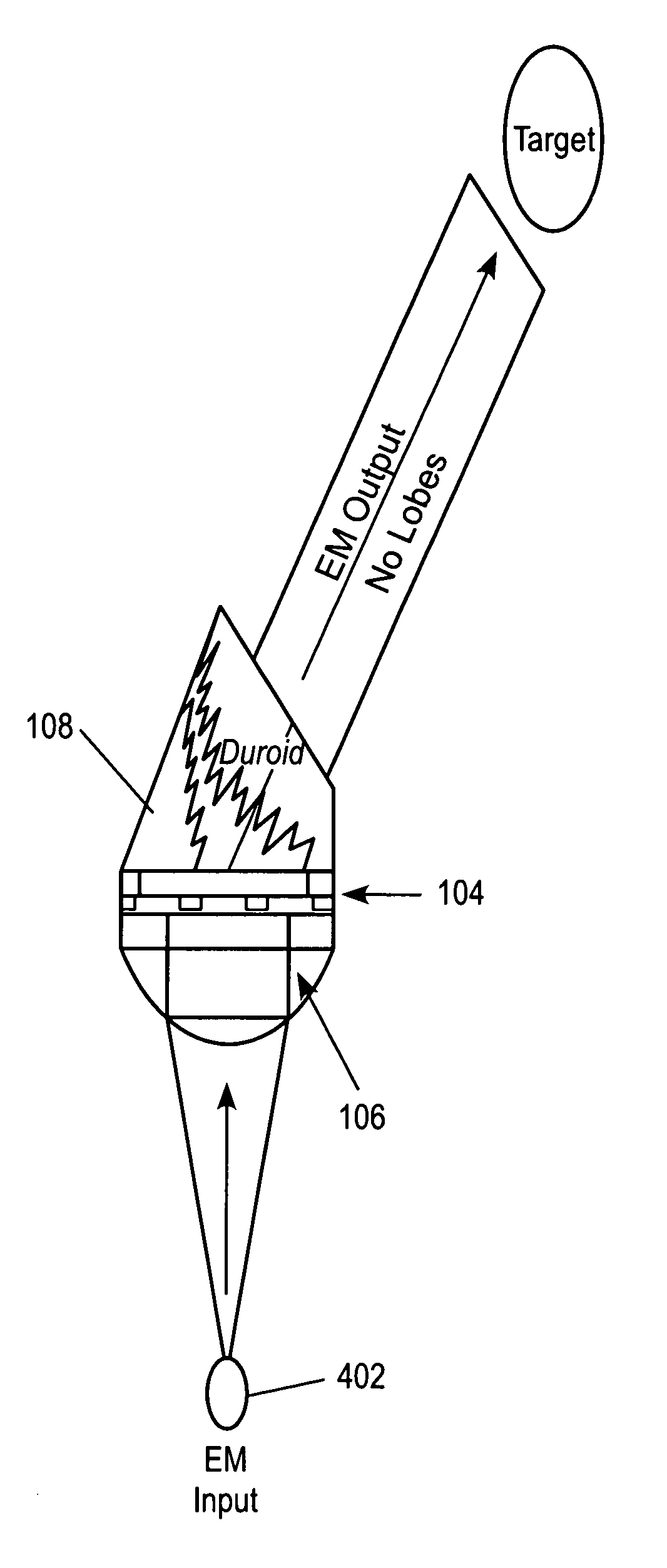System, method and apparatus for RF directed energy
a directed energy and energy technology, applied in the field of electromagnetic (em) energy, can solve the problem that the inertia electron cannot keep up with high frequency
- Summary
- Abstract
- Description
- Claims
- Application Information
AI Technical Summary
Benefits of technology
Problems solved by technology
Method used
Image
Examples
Embodiment Construction
[0021]FIG. 1 illustrates an exemplary apparatus 100, such as an antenna, for emitting electromagnetic (EM) energy. The apparatus comprises a source of EM energy 102. A first material, such as an input dielectric layer 106, is provided to transmit incident EM energy emitted from the EM source. The first material is thus configured (e.g., shaped, sized and positioned relative to the EM source and to other components of the apparatus 100) to receive EM energy from the EM source. The input dielectric layer 106 can be a collimator such as a Duroid, on other material having similar characteristics.
[0022]A second material, such as a metal layer 104, has a first surface adjacent a second material having a first surface adjacent to the first material and a thickness and shape selected to stimulate surface plasmon polaritons on the first surface of the second material adjacent the first material to resonate the EM energy transmitted from the first material such that the resonated EM energy ha...
PUM
 Login to View More
Login to View More Abstract
Description
Claims
Application Information
 Login to View More
Login to View More - R&D
- Intellectual Property
- Life Sciences
- Materials
- Tech Scout
- Unparalleled Data Quality
- Higher Quality Content
- 60% Fewer Hallucinations
Browse by: Latest US Patents, China's latest patents, Technical Efficacy Thesaurus, Application Domain, Technology Topic, Popular Technical Reports.
© 2025 PatSnap. All rights reserved.Legal|Privacy policy|Modern Slavery Act Transparency Statement|Sitemap|About US| Contact US: help@patsnap.com



